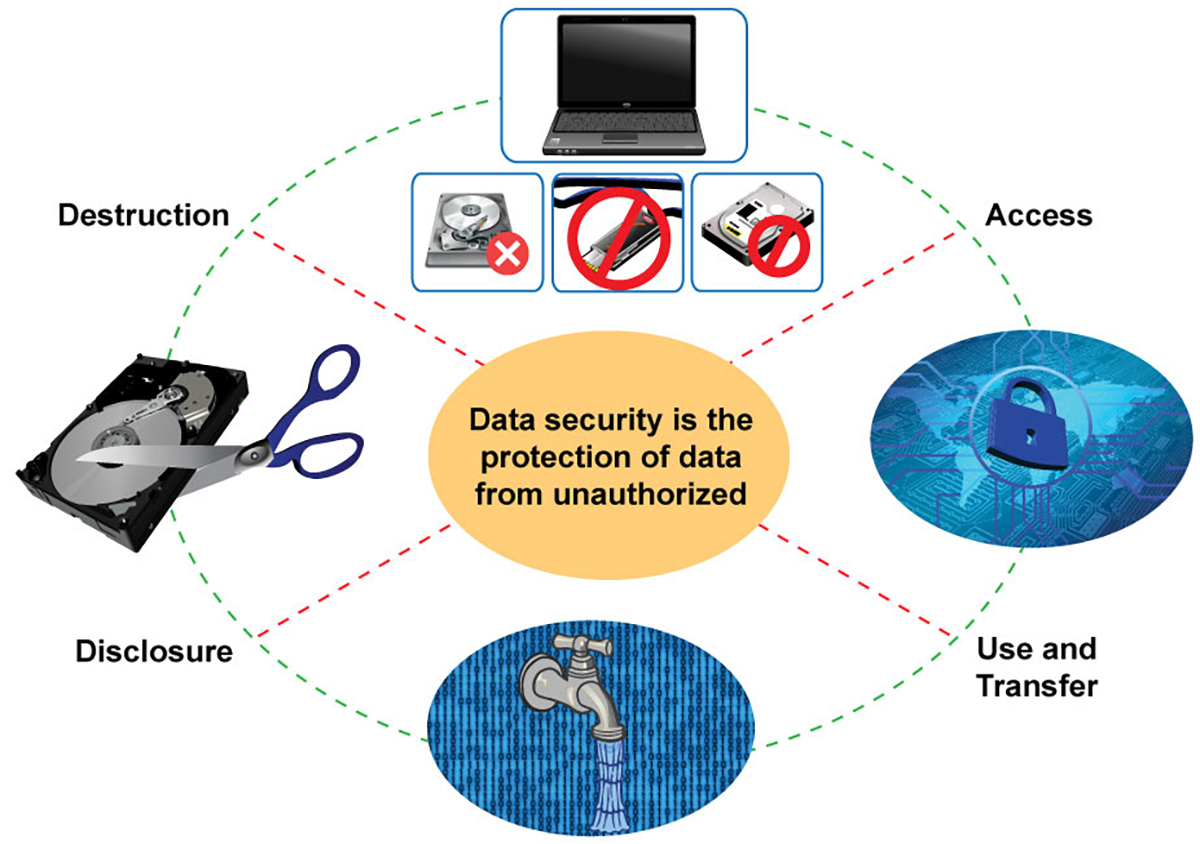Discovering the Significance of Data Damage in the Context of Computer System Security Solutions and Protecting Confidential Data
In a period where information breaches are progressively typical, the value of effective data devastation can not be overstated. Organizations needs to adopt stringent actions to make sure that sensitive information is not just shielded during its lifecycle yet also emphatically removed when no more necessary. The approaches utilized for information eradication, combined with compliance to legal criteria, play a critical duty in preserving confidentiality and trust fund. The ramifications of these practices expand beyond plain compliance, affecting a firm's track record and functional integrity in the electronic marketplace. What approaches can organizations implement to enhance their information devastation protocols?
Comprehending Data Devastation
Information destruction is a crucial part of computer system safety and security that includes the irreversible removal of information from storage space gadgets to stop unauthorized gain access to and prospective data breaches. In a significantly electronic landscape, organizations encounter enhanced risks related to delicate info being incorrectly accessed or made use of. Efficient data destruction safeguards against these threats, guaranteeing that confidential dataâEUR" such as customer information, copyright, and economic recordsâEUR" can not be recouped after disposal.
Comprehending the importance of data devastation prolongs beyond mere conformity with governing and legal frameworks; it is vital for keeping business stability and count on. When information is incorrectly managed or inadequately damaged, the repercussions can be serious, consisting of economic loss, reputational damage, and lawful obligations.
Methods of Information Obliteration

One widespread method is data wiping, which includes overwriting existing data with arbitrary patterns numerous times. This strategy provides the initial information irretrievable, making it a popular choice for organizations looking for to secure confidential details.
Another method is degaussing, which utilizes an effective electromagnetic field to interrupt the magnetic domain names on storage space gadgets, successfully eliminating the information. This approach is specifically reliable for magnetic media but is not applicable to solid-state drives.
Physical damage is one more robust method, squashing or entailing the shredding of storage space gadgets. This technique guarantees that information recuperation is virtually impossible, making it ideal for very delicate information.
Lastly, security can act as a corresponding technique to data eradication. By securing data prior to deletion, companies can add an additional layer of security, making certain that even if remnants are recovered, they stay unattainable without the decryption key. Each approach needs to be selected based on the level of data level of sensitivity and the specific security needs of the organization.
Legal Conformity and Data Safety
Organizations should navigate an intricate landscape of legal demands connected to data security, particularly after implementing approaches of data obliteration. Various laws, such as the General Data Defense Policy (GDPR) and the Medical Insurance Mobility and Accountability Act (HIPAA), impose stringent standards on just how organizations must manage and dispose of delicate information. Failure to comply with these guidelines can bring about home significant lawful consequences, consisting of considerable penalties and reputational damage.
Data destruction processes have to be carefully recorded to show conformity with relevant laws and standards. This documentation not only serves as evidence of adherence to legal responsibilities yet additionally highlights a dedication to protecting delicate details. Organizations must likewise establish clear policies concerning data retention and destruction timelines, ensuring that information is not held longer than needed.

Moreover, normal audits and evaluations of data damage practices are essential to preserve conformity and adapt to advancing legal structures (data destruction). By proactively attending to legal needs, organizations can alleviate risks related to data violations and demonstrate their commitment to data safety and security. Inevitably, prioritizing lawful compliance in data damage procedures is not just a regulative obligation, however a basic aspect of a robust information protection technique
Effect On Business Reputation
The credibility of an organization can be considerably influenced by its technique to information destruction and administration. In today's electronic landscape, where information violations can occur anytime, the failing to effectively take care of sensitive information can result in serious effects. Organizations that improperly take care of information devastation danger revealing confidential customer information, which not only violates personal privacy laws yet additionally deteriorates trust fund amongst stakeholders and customers.
A damaged reputation can result in decreased consumer commitment, as clients become reluctant to engage with a company that has demonstrated negligence in shielding their information. Moreover, unfavorable promotion surrounding an information violation can have an enduring impact, as potential customers could be hindered by the viewed lack of protection. This can lead to a straight decrease in income and market share.
Furthermore, organizations that focus on data damage as part of their security approach can enhance their online reputation by showcasing their commitment to guarding sensitive info. By embracing rigid information administration techniques, organizations can not only reduce threats yet also position themselves as trustworthy entities in their respective sectors, thus enhancing their overall brand image.

Best Practices for Secure Disposal
Applying ideal methods for safe disposal of data is necessary for alleviating dangers connected with data breaches and guaranteeing compliance with privacy regulations. Organizations ought to embrace a thorough data disposal policy that outlines treatments for both electronic and physical information destruction.
For physical information storage gadgets, such as hard disk drives, shredding or degaussing is suggested to stop information recuperation. Additionally, organizations should preserve a chain of safekeeping documents throughout the disposal procedure, ensuring accountability and traceability of disposed items.
For electronic information, utilizing software that abides by industry requirements for data cleaning is essential. This software must overwrite existing information several times, making recovery practically difficult. It is likewise essential to confirm the performance of the data damage process through audits or third-party evaluations.
Educating staff members on protected disposal methods includes another layer of protection, as human mistake can commonly lead to data exposure. On a regular basis reviewing and updating disposal policies guarantees positioning with progressing laws and technological developments. By carrying out these finest practices, organizations can dramatically reduce the risk of unauthorized data access and enhance their general information security approach.
Verdict
To conclude, information destruction is a fundamental facet of computer system safety and security services that makes sure the security of secret information from unauthorized gain access to. Executing efficient approaches of data removal, adhering to lawful conformity, and identifying the effect on service online reputation are essential parts of a thorough information safety method. By embracing best methods for protected disposal, companies can cultivate depend on find here with clients and safeguard delicate data, ultimately adding to an extra safe and secure electronic landscape.
In an age where data violations are progressively common, the relevance of efficient data destruction can not be overstated.Data destruction is a crucial element of computer read this post here protection that entails the permanent removal of information from storage space devices to protect against unauthorized accessibility and possible information violations. Organizations must also develop clear policies regarding data retention and damage timelines, ensuring that information is not held longer than necessary.
By proactively attending to lawful demands, organizations can reduce threats associated with information violations and demonstrate their commitment to information security (data destruction). Eventually, focusing on lawful compliance in data devastation processes is not simply a regulatory responsibility, yet a fundamental facet of a robust data protection method
Comments on “Best Practices for Data Destruction to Fortify Your Cyber Security Framework”